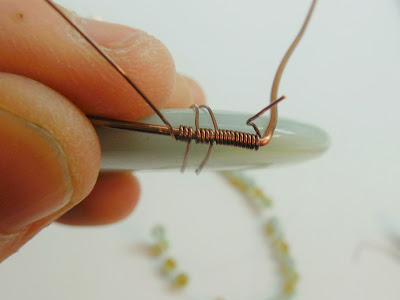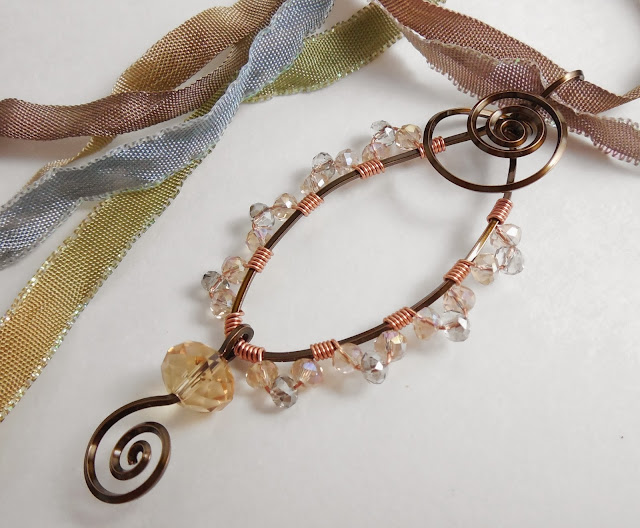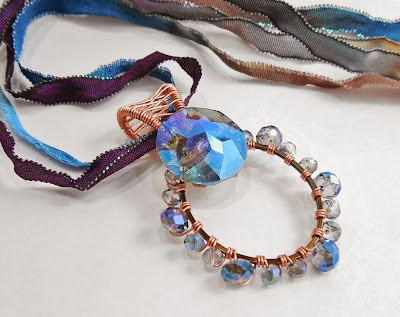This is a custom pendant I made where the client wanted very specific things. He wanted a soft purple stone, in a medium size set in silver for his wife to celebrate their anniversary. I will show you here how I created the stone for this beautiful pendant.
 |
| This is the beautiful finished piece. |
 |
| Here are the chunks of Tiffany Stone (Bertrandite) rough before cutting. |
 |
| After grinding off excess material on a diamond wheel, I now have the preforms for the cabochons. The the short wooden dowels will be used to support the stones while I am working them into cabochons. Here you see what is called the Dop Pot. It is heating the hard green wax that will hold the stones on the dowels, called Dops. The stones also must be heated for the wax to fuse to the back of the stone. They get very hot laying on the rim of the dop pot. |
 |
| Once the wax is melted and the stones are hot, I dip the dop stick into the wax. Then immediately affix to the back of the hot stone. They are left face down to cool before grinding can begin. |
 |
| Here are the stones on the dop sticks ready to cab. |
 |
| On my cabbing machine there are six grinding and polishing wheels, from left to right, the coarsest to the finest. The first two wheels remove most of the material so you can rough out the basic shape of the cab, the next two wheels are where you can refine the shape and remove any little scratches on the stone. The last two are polishing wheels. All grinding is done wet. Without the water, the diamond coating on the wheels would heat up and burn off, rendering the wheels useless. There is a pan of water with lubricant underneath, and a tube attached to a little geyser that shoots lubricated water up onto the wheel I am working on. |
 |
| Here are the nearly finished cabochons, still attached to the dop sticks. |
 |
| I place the dopped cabs in the freezer for five minutes. Cooling the stone helps break the bond between the wax and the stone, so the sticks and wax release easily. |
 |
| Here are the extra pretty finished Tiffany Stone cabochons. |
 |
| Now, to make the pendant. These are the basic tools I use in wirework. |
 |
| I start by weaving a bezel for the stone. |
 |
| The most important part of any wire design is getting an exact fit of the bezel or frame to the stone. I lay the stone on a flat surface, and work the wire on on the stone until I am satisfied with the fit. Then design the rest of the piece from there. |
 |
| Here is the beautiful finished piece! |





















































